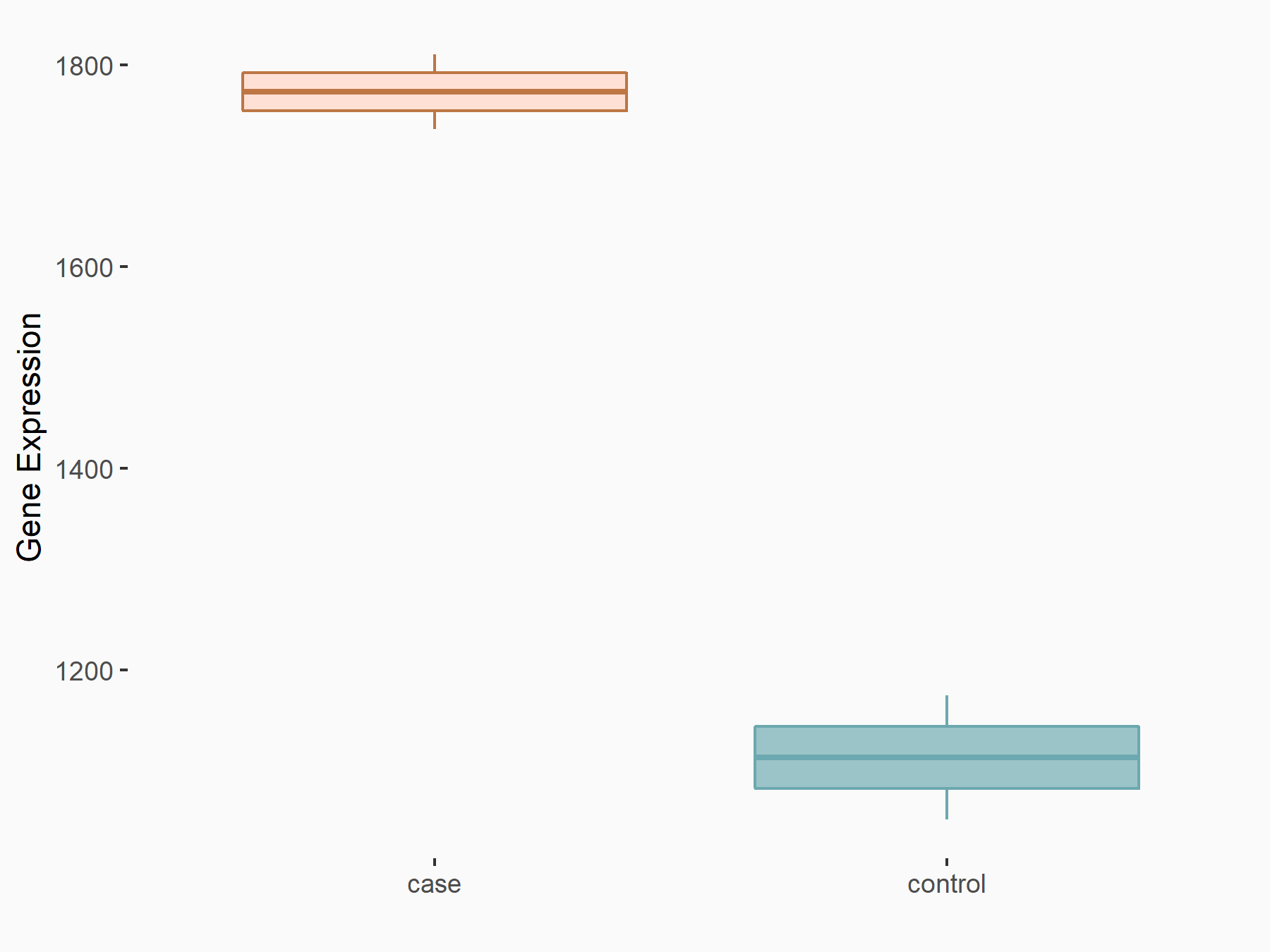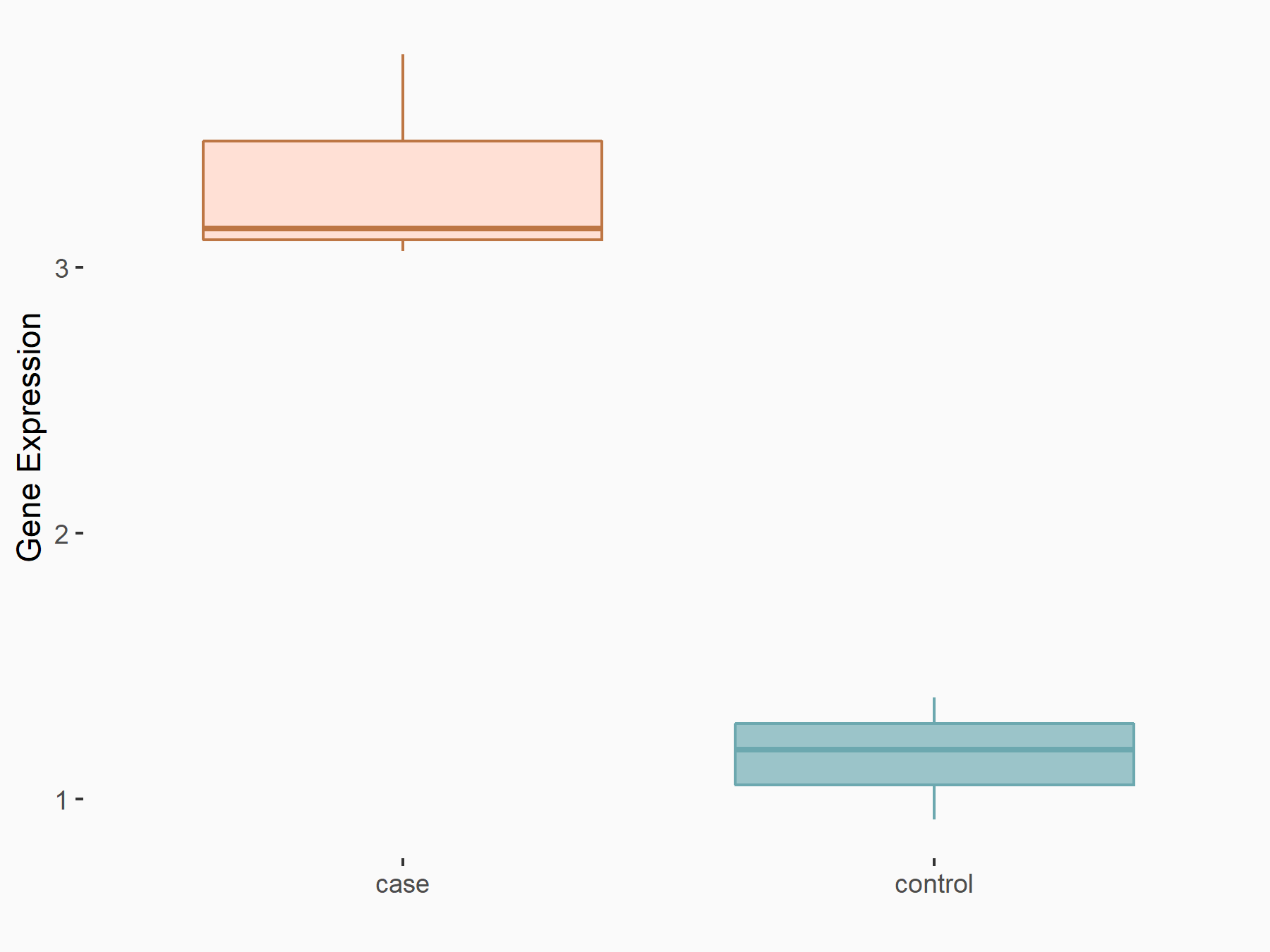m6A Target Gene Information
General Information of the m6A Target Gene (ID: M6ATAR00420)
Full List of m6A Methylation Regulator of This Target Gene and Corresponding Disease/Drug Response(s)
STK11
can be regulated by the following regulator(s), and cause disease/drug response(s). You can browse detail information of regulator(s) or disease/drug response(s).
Browse Regulator
Browse Disease
RNA demethylase ALKBH5 (ALKBH5) [ERASER]
| Representative RNA-seq result indicating the expression of this target gene regulated by ALKBH5 | ||
| Cell Line | 143B cell line | Homo sapiens |
|
Treatment: siALKBH5 transfected 143B cells
Control: siControl 143B cells
|
GSE154528 | |
| Regulation |
  |
logFC: 6.73E-01 p-value: 8.05E-04 |
| More Results | Click to View More RNA-seq Results | |
| In total 1 item(s) under this regulator | ||||
| Experiment 1 Reporting the m6A Methylation Regulator of This Target Gene | [1] | |||
| Response Summary | ALKBH5 gain- or loss-of function could effectively reverse Serine/threonine-protein kinase STK11 (STK11/LKB1) regulated cell proliferation, colony formation, and migration of KRAS-mutated lung cancer cells. | |||
| Target Regulation | Down regulation | |||
| Responsed Disease | Lung cancer | ICD-11: 2C25 | ||
| In-vitro Model | SW480 | Colon adenocarcinoma | Homo sapiens | CVCL_0546 |
| PANC-1 | Pancreatic ductal adenocarcinoma | Homo sapiens | CVCL_0480 | |
| MRC-9 | Normal | Homo sapiens | CVCL_2629 | |
| MIA PaCa-2 | Pancreatic ductal adenocarcinoma | Homo sapiens | CVCL_0428 | |
| H1795 (Lung cancer H1795 cell lines were purchased from ATCC, USA) | ||||
| NCI-H1792 | Lung adenocarcinoma | Homo sapiens | CVCL_1495 | |
| NCI-H1703 | Lung squamous cell carcinoma | Homo sapiens | CVCL_1490 | |
| NCI-H1650 | Minimally invasive lung adenocarcinoma | Homo sapiens | CVCL_1483 | |
| NCI-H1299 | Lung large cell carcinoma | Homo sapiens | CVCL_0060 | |
| DLD-1 | Colon adenocarcinoma | Homo sapiens | CVCL_0248 | |
| A-549 | Lung adenocarcinoma | Homo sapiens | CVCL_0023 | |
Wilms tumor 1-associating protein (WTAP) [WRITER]
| Representative RNA-seq result indicating the expression of this target gene regulated by WTAP | ||
| Cell Line | CD4+ T cells | Mus musculus |
|
Treatment: Wtap knockout CD4+ T cells
Control: Wild type CD4+ T cells
|
GSE188814 | |
| Regulation |
  |
logFC: 1.01E+00 p-value: 6.29E-04 |
| More Results | Click to View More RNA-seq Results | |
| In total 1 item(s) under this regulator | ||||
| Experiment 1 Reporting the m6A Methylation Regulator of This Target Gene | [2] | |||
| Response Summary | WTAP/Serine/threonine-protein kinase STK11 (STK11/LKB1)/AMPK axis in hepatocellular carcinoma cells acted as a key regulator, linking m6A with autophagy. WTAP-mediated m6A modification plays an important role in the regulation of autophagy in hepatocellular carcinoma cells, which provides a promising target for the treatment of hepatocellular carcinoma. | |||
| Target Regulation | Up regulation | |||
| Responsed Disease | Hepatocellular carcinoma | ICD-11: 2C12.02 | ||
| Pathway Response | AMPK signaling pathway | hsa04152 | ||
| Autophagy | hsa04140 | |||
| Cell Process | Cell autophagy | |||
| In-vitro Model | BEL-7402 | Endocervical adenocarcinoma | Homo sapiens | CVCL_5492 |
| BEL-7404 | Endocervical adenocarcinoma | Homo sapiens | CVCL_6568 | |
| HEK293T | Normal | Homo sapiens | CVCL_0063 | |
| L-02 | Endocervical adenocarcinoma | Homo sapiens | CVCL_6926 | |
| SMMC-7721 | Endocervical adenocarcinoma | Homo sapiens | CVCL_0534 | |
Liver cancer [ICD-11: 2C12]
| In total 1 item(s) under this disease | ||||
| Experiment 1 Reporting the m6A-centered Disease Response | [2] | |||
| Response Summary | WTAP/Serine/threonine-protein kinase STK11 (STK11/LKB1)/AMPK axis in hepatocellular carcinoma cells acted as a key regulator, linking m6A with autophagy. WTAP-mediated m6A modification plays an important role in the regulation of autophagy in hepatocellular carcinoma cells, which provides a promising target for the treatment of hepatocellular carcinoma. | |||
| Responsed Disease | Hepatocellular carcinoma [ICD-11: 2C12.02] | |||
| Target Regulator | Wilms tumor 1-associating protein (WTAP) | WRITER | ||
| Target Regulation | Up regulation | |||
| Pathway Response | AMPK signaling pathway | hsa04152 | ||
| Autophagy | hsa04140 | |||
| Cell Process | Cell autophagy | |||
| In-vitro Model | BEL-7402 | Endocervical adenocarcinoma | Homo sapiens | CVCL_5492 |
| BEL-7404 | Endocervical adenocarcinoma | Homo sapiens | CVCL_6568 | |
| HEK293T | Normal | Homo sapiens | CVCL_0063 | |
| L-02 | Endocervical adenocarcinoma | Homo sapiens | CVCL_6926 | |
| SMMC-7721 | Endocervical adenocarcinoma | Homo sapiens | CVCL_0534 | |
Lung cancer [ICD-11: 2C25]
| In total 1 item(s) under this disease | ||||
| Experiment 1 Reporting the m6A-centered Disease Response | [1] | |||
| Response Summary | ALKBH5 gain- or loss-of function could effectively reverse Serine/threonine-protein kinase STK11 (STK11/LKB1) regulated cell proliferation, colony formation, and migration of KRAS-mutated lung cancer cells. | |||
| Responsed Disease | Lung cancer [ICD-11: 2C25] | |||
| Target Regulator | RNA demethylase ALKBH5 (ALKBH5) | ERASER | ||
| Target Regulation | Down regulation | |||
| In-vitro Model | SW480 | Colon adenocarcinoma | Homo sapiens | CVCL_0546 |
| PANC-1 | Pancreatic ductal adenocarcinoma | Homo sapiens | CVCL_0480 | |
| MRC-9 | Normal | Homo sapiens | CVCL_2629 | |
| MIA PaCa-2 | Pancreatic ductal adenocarcinoma | Homo sapiens | CVCL_0428 | |
| H1795 (Lung cancer H1795 cell lines were purchased from ATCC, USA) | ||||
| NCI-H1792 | Lung adenocarcinoma | Homo sapiens | CVCL_1495 | |
| NCI-H1703 | Lung squamous cell carcinoma | Homo sapiens | CVCL_1490 | |
| NCI-H1650 | Minimally invasive lung adenocarcinoma | Homo sapiens | CVCL_1483 | |
| NCI-H1299 | Lung large cell carcinoma | Homo sapiens | CVCL_0060 | |
| DLD-1 | Colon adenocarcinoma | Homo sapiens | CVCL_0248 | |
| A-549 | Lung adenocarcinoma | Homo sapiens | CVCL_0023 | |
References